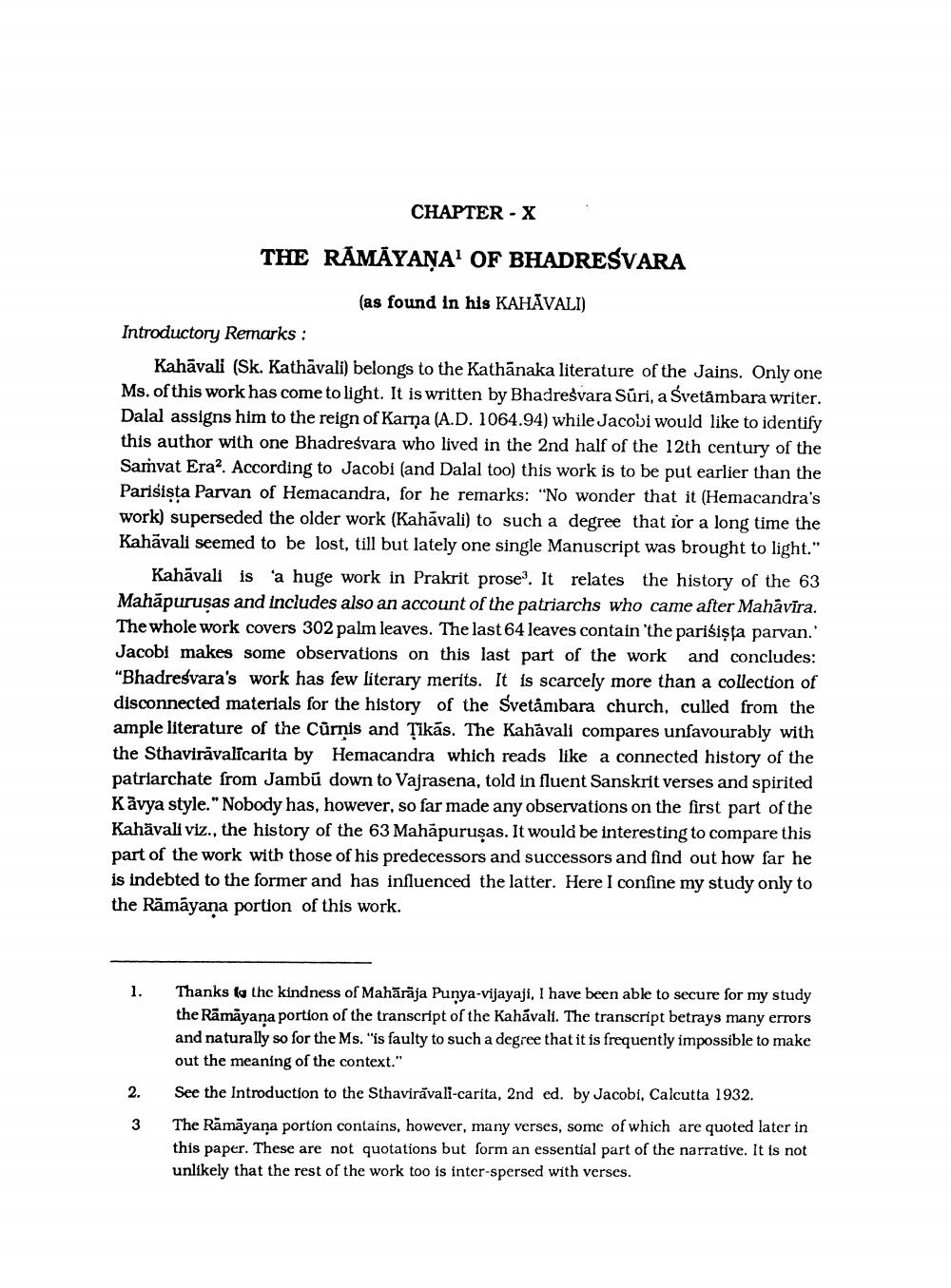________________
CHAPTER - X
THE RÁMĀYAŅA' OF BHADRESVARA
(as found in his KAHĀVALI) Introductory Remarks:
Kahāvali (Sk. Kathāvali) belongs to the Kathānaka literature of the Jains. Only one Ms. of this work has come to light. It is written by Bhadreśvara Súri, a Svetambara writer. Dalal assigns him to the reign of Karna (A.D. 1064.94) while Jacobi would like to identify this author with one Bhadreśvara who lived in the 2nd half of the 12th century of the Samvat Era?. According to Jacobi (and Dalal too) this work is to be put earlier than the Parisista Parvan of Hemacandra, for he remarks: "No wonder that it (Hemacandra's work) superseded the older work (Kahāvali) to such a degree that for a long time the Kahävalt seemed to be lost, till but lately one single Manuscript was brought to light."
Kahāvali is a huge work in Prakrit prose?. It relates the history of the 63 Mahāpurusas and includes also an account of the patriarchs who came after Mahāvīra. The whole work covers 302 palm leaves. The last 64 leaves contain the parisista parvan.' Jacobi makes some observations on this last part of the work and concludes: “Bhadresvara's work has few literary merits. It is scarcely more than a collection of disconnected materials for the history of the Svetånbara church, culled from the ample literature of the Cūrnis and Țikās. The Kahāvali compares unfavourably with the Sthavirävalīcarita by Hemacandra which reads like a connected history of the patriarchate from Jambú down to Vajrasena, told in fluent Sanskrit verses and spirited Kavya style." Nobody has, however, so far made any observations on the first part of the Kahävali viz., the history of the 63 Mahāpuruşas. It would be interesting to compare this part of the work with those of his predecessors and successors and find out how far he is indebted to the former and has influenced the latter. Here I confine my study only to the Rāmāyana portion of this work.
Thanks to the kindness of Mahārāja Punya-vijayaji. I have been able to secure for my study the Rāmāyana portion of the transcript of the Kahávali. The transcript betrays many errors and naturally so for the Ms. "is faulty to such a degree that it is frequently impossible to make out the meaning of the context." See the Introduction to the Sthavirāvali-carita, 2nd ed. by Jacobi, Calcutta 1932. The Rämāyana portion contains, however, many verses, some of which are quoted later in this paper. These are not quotations but form an essential part of the narrative. It is not unlikely that the rest of the work too is inter-spersed with verses.




